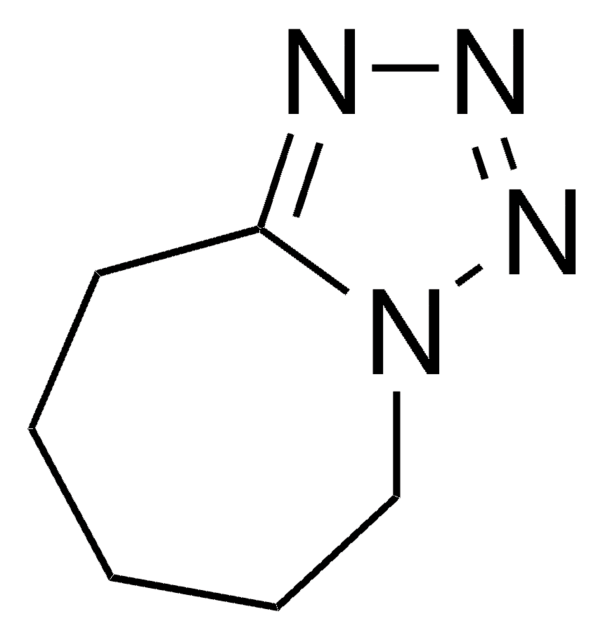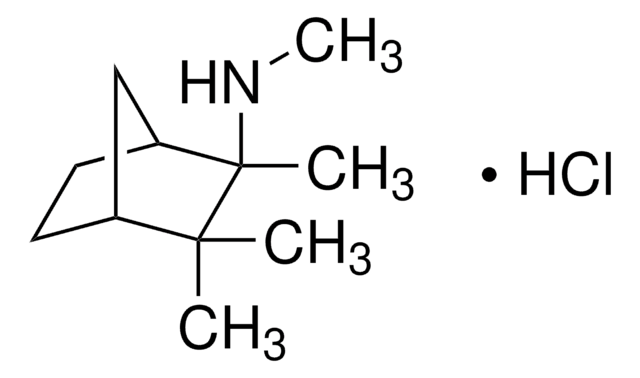G8134
Gallamine triethiodide
≥98% (TLC), powder, muscarinic receptor antagonist
About This Item
Recommended Products
Quality Level
Assay
≥98% (TLC)
form
powder
mp
235 °C (dec.) (lit.)
solubility
H2O: 100 mg/mL
ethanol: soluble
storage temp.
2-8°C
SMILES string
[I-].[I-].[I-].CC[N+](CC)(CC)CCOc1cccc(OCC[N+](CC)(CC)CC)c1OCC[N+](CC)(CC)CC
InChI
1S/C30H60N3O3.3HI/c1-10-31(11-2,12-3)22-25-34-28-20-19-21-29(35-26-23-32(13-4,14-5)15-6)30(28)36-27-24-33(16-7,17-8)18-9;;;/h19-21H,10-18,22-27H2,1-9H3;3*1H/q+3;;;/p-3
InChI key
REEUVFCVXKWOFE-UHFFFAOYSA-K
Gene Information
human ... CHRM1(1128) , CHRM2(1129) , CHRM3(1131) , CHRM4(1132) , CHRM5(1133) , CHRNA1(1134) , CHRNB1(1140) , CHRND(1144) , CHRNE(1145) , CHRNG(1146)
Looking for similar products? Visit Product Comparison Guide
Application
- as a relaxant for measuring spinal trigeminal nucleus recordings from single neurons.
- as an antagonist in neuroblastoma cells as M2 receptor
- to reduce eye movement during retinal surgery in rat
Biochem/physiol Actions
Features and Benefits
Caution
Signal Word
Warning
Hazard Statements
Precautionary Statements
Hazard Classifications
Acute Tox. 4 Oral
Storage Class Code
11 - Combustible Solids
WGK
WGK 3
Personal Protective Equipment
Choose from one of the most recent versions:
Already Own This Product?
Find documentation for the products that you have recently purchased in the Document Library.
Our team of scientists has experience in all areas of research including Life Science, Material Science, Chemical Synthesis, Chromatography, Analytical and many others.
Contact Technical Service









